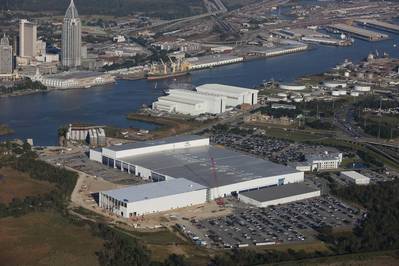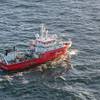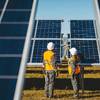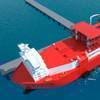Shipbuilding Interview: Rusty Murdaugh, President, Austal USA
Austal USA has been investing mightily, more than $600 million to expand its repair and services business for both commercial and military customers; and in the opening of a state-of-the-art steel panel line in Mobile to complement its established aluminum shipbuilding operations. Rusty Murdaugh, President, Austal USA, discusses the rationale behind the investment as Austal USA drives quickly toward a $500m services model.
- Most of our readers know the Austal USA brand, but can you give a “by the numbers” look at Austal USA today?
Austal is about 3,200 people today, and there's about 573 direct and indirect suppliers in 41 states that we support. We've got 180 acres in Mobile, and we’ve added 15 acres with the opening of the facility in San Diego. We're investing about $110 million in our new state-of-the-art steel panel line; (and overall today date) the investments we've made are roughly $630 million. Finally, we're really proud to say that 21 safety awards in 12 years.
- You've been with Austal USA since 2017, but your tenure in the leadership seat has been shorter than that. Coming into the president position, what were your immediate priorities?
The priorities remain very similar to what they were (when I was named interim president in February 2021), but on an accelerated path. That's to win new orders for ships, it's to expand and grow our services model, it's to get that steel line up and running and ensure it is a competitive advantage for us. But all of that can't work without focusing on great people and processes.
- With the opening of Austal West Campus (AWC), the finalization of the deal to open the repair facility in San Diego and the ordering of the new drydock from Sedef Shipyard in Turkey, can you discuss the cumulative investment to date and the rationale behind adding this capability to the Austal USA brand?
Each component of our business model has a strategic element to it. At AWC it was to launch our own ships to get deep water and then to also grow our services business. That investment was about $12 million. This latest (addition) in San Diego is to expand upon the contracts that we've already been awarded. Usually, you build a yard and then you go after contracts, but we were working these simultaneously. Expanding is critical in San Diego because we've recently won the SCC East, the SCC West, and the IDIQ LMA contracts; and all are going to be hubbed out of this particular region's facility so that we can expand that waterfront and do top side work.
Not only do work on our own ships, but we also do work on other folks' ships. (With all of this) and the dry dock, in services we've invested $150 million over the last three years.
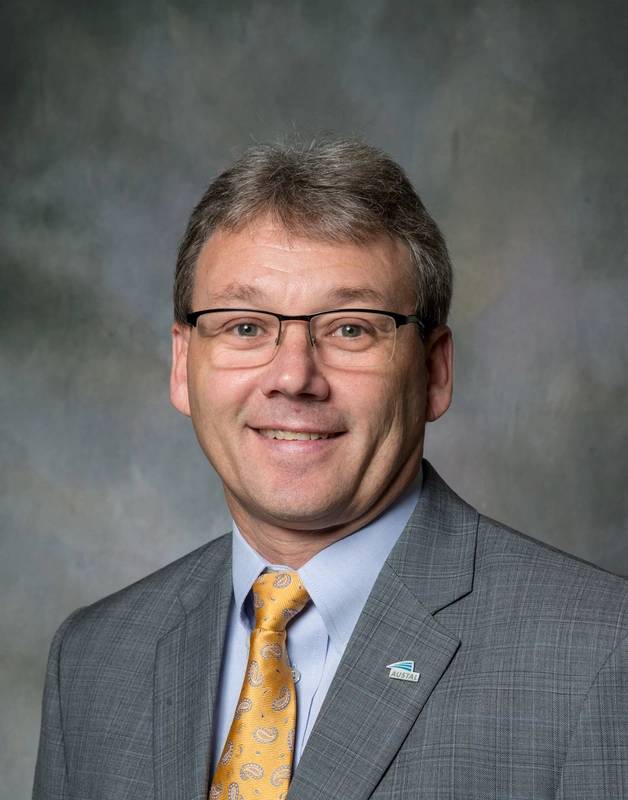
“Maybe your readers will be a little surprised to hear this, but we want a half-billion dollar services model. And so incrementally, we're making greenfield organic and inorganic triggering events to get us there. Starting on the west coast and expanding was obvious. We are looking at other opportunities, both in the U.S. to build upon our presence in Mobile and the west coast, as well as expanding our presence overseas, where we currently have a good model in Singapore.”
Rusty Murdaugh, President, Austal USA
Photo courtesy Austal USA
- So when when you look at the existing Austal USA new build facilities and the personnel, how do they complement and augment all this new repair and service operation?
Well it goes back to those priorities, including people and processes. We focus in on the ships that we produce and the people that produce them. We're looking to leverage that experience and knowledge in the services model.
- Do you have any plans to expand the repair and services operation further?
Yes, we do. Maybe your readers will be a little surprised to hear this, but we want a half-billion dollar services model. And so incrementally, we're making greenfield organic and inorganic triggering events to get us there. Starting on the west coast and expanding was obvious. We are looking at other opportunities, both in the U.S. to build upon our presence in Mobile and the west coast, as well as expanding our presence overseas, where we currently have a good model in Singapore. So without being too specific, the adjunct of all of that is to drive through a half a billion dollars of business in a rather quick fashion.
- With the multitude of investment and changes, can you run us through the timeline when all will be online and functional?
(In regards to) our steel line, we're tracking on budget and on schedule to have that ready April 1, 2022. We're doing the same with the San Diego model. The full use of that dry docking model will be ready by August 2023. And that's why it was really important for us to make that release and order the dry dock now because we're accelerating and we found a really good supplier (Sedef Shipyard in Turkey) to be able to build not only what we need as far as size and capability, but to build it in an expeditious manner. So in the short term, we'll be doing top side work and other type of work in this yard while getting ready for the dry dock to get up and running in the August 2023 model.
From a strategic perspective, the dry dock will be the right size, meaning we don't run a dry dock that's over the capacity of the yard and competing with some of the bigger ship repair yards in San Diego. We believe there's a big enough demand for LCSs and equivalent ships of size. So if you think about the middle market being frigates, LCSs, EPS, our dry dock will be able to accommodate that size ship, which are really not efficient to put on a bigger dry dock and too big to put on a smaller dry dock. So we're targeting the middle market, and specifically targeting LCSs.
- In the context of the Austal USA business as a whole looking at 2022 and beyond, what do you consider to be your greatest challenges and where do you see the best opportunities?
Creating and winning profitable opportunities to grow the business is one of the biggest challenges any shipyard has. It's a contact sport. I can't do much about companies that are willing to underbid the work; that’s just not Austal's model. So for me, weathering the storm from when people buy into work to fill their yards is the hardest part and the challenge. But growing a business is difficult on its own in this industry. I just want to make sure the things that we are chasing and creating and winning create profitable growth for my shareholders.
As for opportunities, servicing our own ships and leveraging our strengths is really key for us, but creating a state-of-the-art, new construction facility in steel, and having a competitive advantage by using the same proven methods and processes and people that we've done in building ships is really our best opportunity to shine. It doesn't matter to us, it's agnostic whether it's steel or aluminum. For us, the best opportunities are leverage our strengths with these new elements of what we call our defined total available market.
The New Drydock for San Diego
- Shipyard Sedef Shipyard, Turkey
- Date to Enter Service August 2023
- Lifting capacity 9,000 light tons
- Length 531 ft. (162m)
- Width 154 ft. (47m)
- Draft 36 ft. (11m)
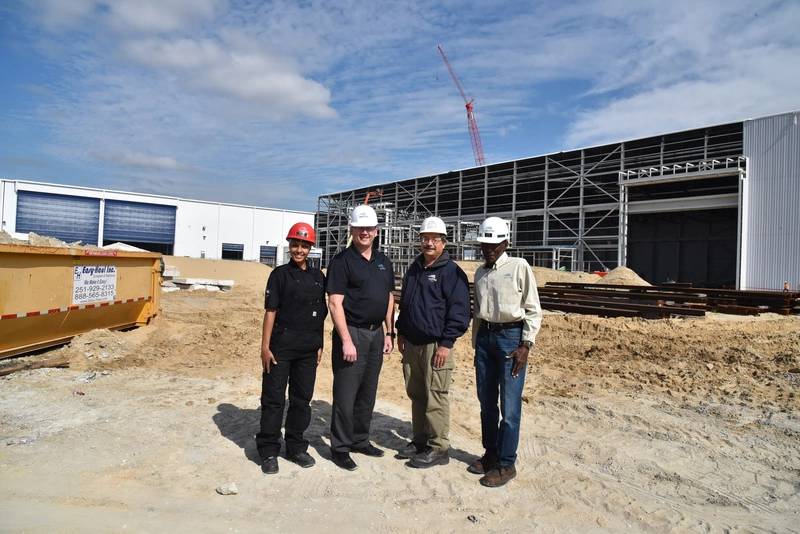 L to R: Christina Sashington (Austal’s youngest employee), Rusty Murdaugh, Mike Bell (VP Operations) and Curtis Greenhouse (Austal’s oldest employee). The picture is taken in front of the steel production line facility while under construction. Photo courtesy Austal USA
L to R: Christina Sashington (Austal’s youngest employee), Rusty Murdaugh, Mike Bell (VP Operations) and Curtis Greenhouse (Austal’s oldest employee). The picture is taken in front of the steel production line facility while under construction. Photo courtesy Austal USA




